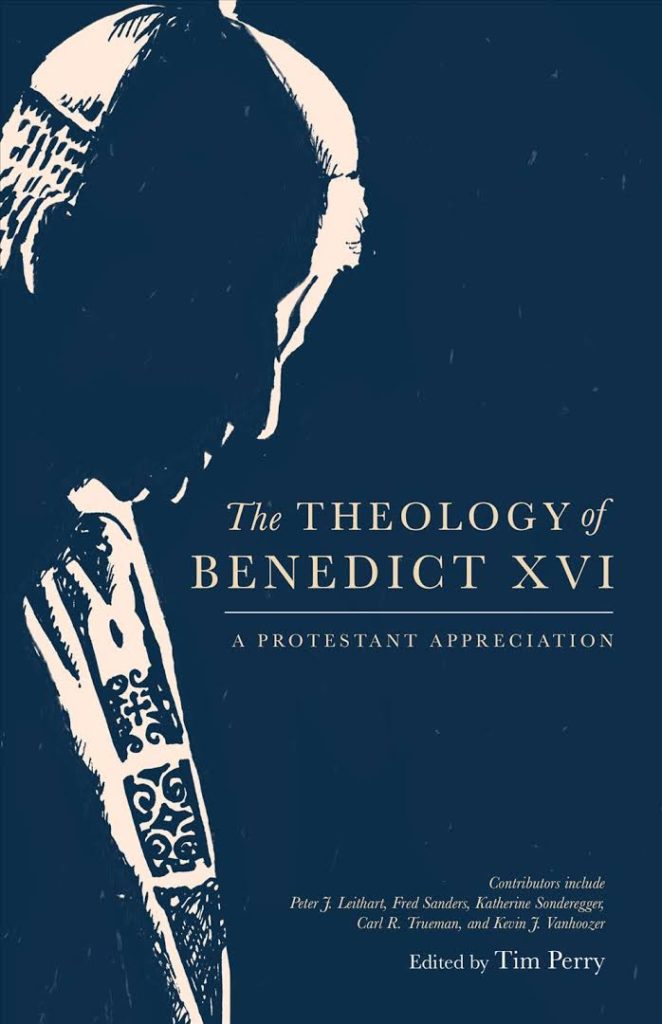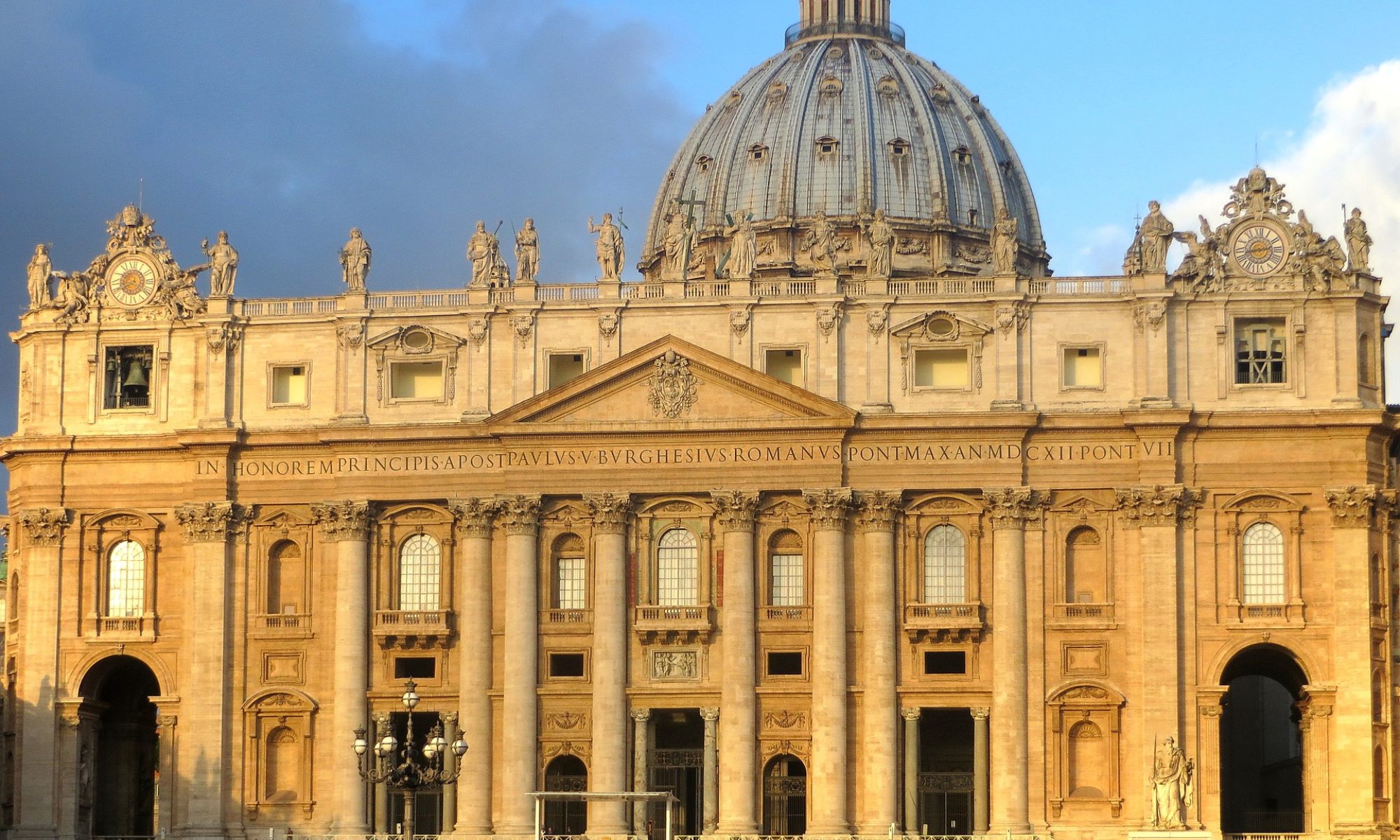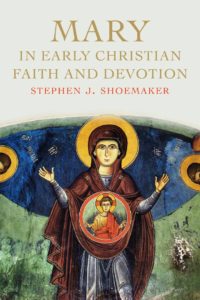Pope Benedict XVI (Joseph Ratzinger) is one of the towering figures in twentieth-century Roman Catholic theology. Born in 1927, his impressive biography includes having been a theological expert at the Second Vatican Council (1962-1965), holding various professorships in Munich, Bonn, Münster, and Regensburg (1957-1977), being Archbishop of Munich (1977-1981) and Cardinal, then Prefect of the Congregation for the Doctrine of the Faith (1981-2005), to eventually becoming Pope (2005-2013), and since 2013, Pope Emeritus. His Opera Omnia consists of 16 volumes and covers virtually all aspects of theology and church life with scholarly depth. Needless to say, one cannot think about seriously dealing with present-day Roman Catholicism without coming to terms with his work.
His stature makes his reputation spillover from the Roman Catholic world. So a book on The Theology of Benedict XVI: A Protestant Appreciation, ed. T. Perry (Bellingham, WA: Lexham Press, 2019), is no surprise and is a welcome contribution to approaching the work of Joseph Ratzinger from the outside. The volume contains 15 articles written by Protestant authors who cover various aspects of his work, especially in the areas of dogmatic and liturgical theology, offering an entry point into his theological vision. The overall tone of the articles is generally informative and understandably appreciative, as the subtitle indicates.

Tim Perry, the editor of the book, is not new to initiatives aimed at building an ecumenical bridge between Evangelicals and Catholics. One can think of his editorship of The Legacy of John Paul II: An Evangelical Assessment (2007), in which Pope Wojtyła was assessed in extremely generous terms– so generous that the analysis seemed to be selective and forgetful of major critical points of his legacy (e.g. see my review asking questions about John Paul II’s alleged but idiosyncratic “Christ-centered legacy”). Other volumes by Perry (e.g. Mary for Evangelicals, 2006, and with D. Kendall, The Blessed Virgin Mary, 2013) also show his desire to wet the evangelical appetite for Roman Catholic doctrine and spiritualità (e.g. Mariology) while not always indicating what is biblically at stake in them. His chapter on Mary in the book (pp. 118-135) confirms his desire to find ways to “redeem” the Catholic Marian dogmas and practices for evangelical readers, even when they should be simply rejected from a biblical standpoint.
In his introduction, Perry looks at the (ecumenical?) future and singles out four ways in which Ratzinger’s theological wisdom can be useful for tomorrow’s church. Learning from Benedict, the church will:
1. find her strength in holy Scripture;
2. affirm that Christian faith is reasonable;
3. depend much more on the visible holiness of her members; and
4. be humble (pp. 7-9).
These are all important points. However, on either side of the Tiber (Protestant or Roman Catholic), who can be against them? They are so generic that even along the liberal-conservative dividing line within various Christian groups, who could say anything contrary? The problem is: does this list fairly and accurately represent, if not the whole, at least the heart of Ratzinger’s theology? Would Benedict himself summarize his work in these points? Are we sure that his message to the churches can be separated from the sacramental, hierarchical, and institutional nature of the Roman gospel and Rome’s “thick” claims on ecclesiology, soteriology, the papacy, Mariology, etc.?
The intention of “appreciating” Ratzinger’s theology is evident, but what about the ability to penetrate it? The impression of a similar gap is confirmed in other chapters of the book. For example, Ben Meyers and Katherine Sonderegger helpfully discuss the relationship between faith and reason in Ratzinger (11-25 and 28-45). The rationality of faith is certainly a theme dear to him, but as clearly demonstrated in his famous 2006 Regensburg Lecture “Faith, Reason and the University”, Benedict builds this rationality on the “synthesis between the Greek spirit and the Christian spirit” and firmly rejects what he identifies as the “programme of dehellenization” of the faith. According to him, this programme took place on the 16th century “Scripture Alone” Protestant principle, continued through 19th and 20th century theological liberalism, and eventually resulted in present-day relativistic multi-culturalism. One would have thought that in a book that presents a “Protestant” voice, someone would take issue with Benedict for his totally negative assessment of Sola Scriptura, one of the pillars of classic Protestantism, which he considers to hold the main responsibility for the wreckage of the Christian faith. Instead, the overall “appreciation” for Ratzinger’s defense of the rationality of faith over and against the “Scripture Alone” principle takes precedence over a truly Protestant analysis, thus skipping the opportunity to engage in constructive dialogue (which involves biblical critique done in a gracious yet firm way).
Another example of this weakness of the book has to do with Ratzinger’s Trinitarian theology. In his chapter on the topic, Fred Sanders commends his “powerful set of Trinitarian commitments” (p. 136), a common theological foundation that is often praised in the book as something that Ratzinger shares with Protestants. Because of his Trinitarianism, Ratzinger is presented as an ecumenical theologian from whom Protestants must learn. Staying on the surface of Trinitarian theology, this might be true, but as soon as one begins to dig deeper, things significantly change. In presenting his liturgical vision, Peter Leithart quotes Ratzinger talking about the Eucharist:
“The Eucharistic Prayer is as entering into the prayer of Jesus Christ himself, hence it is the Church’s entering into the Logos, the Father’s Word” (p. 197).
The Church enters into the Logos! This is a view of the Eucharist that is heavily embedded in a Trinitarian framework and implies that there is an organic “Christ-Church interconnection” (an expression used by Gregg Allison, p. 63), which is biblically disputable. Ratzinger’s Trinitarian theology demands that the Church enters into the Logos, thus becoming one with Him and claiming to prolong (so to speak) His incarnation in her teaching and her sacramental and ruling offices. This view is based on a Trinitarian argument, but runs contrary to the standard Protestant view of the Church and her relationship with Christ.
Or again, in skillfully dealing with Ratzinger’s theology of the Word of God, Kevin Vanhoozer quotes Benedict saying:
“As the Word of God becomes flesh by the power of the Holy Spirit in the womb of the Virgin Mary, so Sacred Scripture is born from the womb of the Church by the power of the Holy Spirit” (p. 69).
The theology of Scripture is set in the context of Trinitarian theology, and the Church is embedded in this Trinitarian dynamic as if she were the mother of the Word because the presence of the Spirit is intrinsically tied to her. The link between the Holy Spirit and the Church is so organic that “for Benedict, Scripture, tradition, and the Roman magisterium always coincide because they are guided by the same Spirit” (p. 85). His Trinitarian theology leads Ratzinger to “dismissing” (p. 68) and “explicitly” denying Sola Scriptura (p. 75), which is one of the tenets of the evangelical understanding of the gospel.
The question is: if Catholics and Protestants have the same Trinitarian foundation (as many chapters of the book assume), how is it that they come to very different accounts of Revelation, the Bible, the Church, the sacraments, salvation, … the gospel? If we have this foundational commonality, why does Ratzinger argue in (his) Trinitarian terms that “Scripture Alone” is – for example – the main cause of the departure from the rationality of faith (e.g. in the above mentioned Regensburg Lecture) and is to be rejected in order to embrace a proper view of the Eucharist and Revelation? Are we not dealing with gospel issues that stem from different Trinitarian views, which look similar in language and on the surface but are undergirded by different core commitments and result in ultimately different accounts of the gospel?
The “appreciative” tone of the book shies away from asking the question, let alone responding to it, with exceptions and with some interesting hints. The chapters by Allison and Vanhoozer point to the idea that something deeper than acknowledging generic commonalities runs in the Roman Catholic and Protestant theological basic orientations. As Carl Trueman rightly observes in his chapter “Is the Pope (Roman Catholic)?”,
“Roman Catholicism is not simply Protestantism with a different set of doctrines. It is a different way of thinking about Christianity, a way that draws a very tight connection between Scripture, tradition, and the doctrine of the church in a manner alien to Protestantism” (p. 153).
“A different way of thinking”. Finally, someone in the book indicates what is at stake in dealing with Roman Catholicism in general and with Ratzinger in particular. “A different way of thinking” that has some overlap in the use of biblical and theological language but is constructed with a different blueprint and results in a different answer to the ultimate questions about God, the world, and eternity. “A different way of thinking”. This is a clue that helps us to appreciate Benedict’s theology much more than lazily praising what we Protestants have in common with it. I think Ratzinger would agree more with this “different way of thinking” type of appraisal than with words of praise that do not go deep enough in the analysis of his theology. Trueman quotes him saying:
“The way one views the structure of Christianity will necessarily affect in some measure, great or small, one’s attitude to various particular matters contained within the whole” (n. 26, p. 163).
The book The Theology of Benedict XVI: A Protestant Appreciation contains several “particulars” of Ratzinger’s theology from a Protestant viewpoint, but the “structure” of his view of Christianity is only touched upon by few of them and is left as a homework that is still to be done. The “appreciation” of the book should be heard, but not at the expense of neglecting the fact that Benedict and Protestants have different views of the “structure of Christianity” that impact the whole of their respective faiths.
P.S. On Ratzinger’s theology I have also written an “appreciative” (I hope) yet evangelically critical article: Progressive, Conservative or Roman Catholic? On the Theology of Joseph Ratzinger in Evangelical Perspective, “Perichoresis” 6.2 (2008) pp. 201-218.

